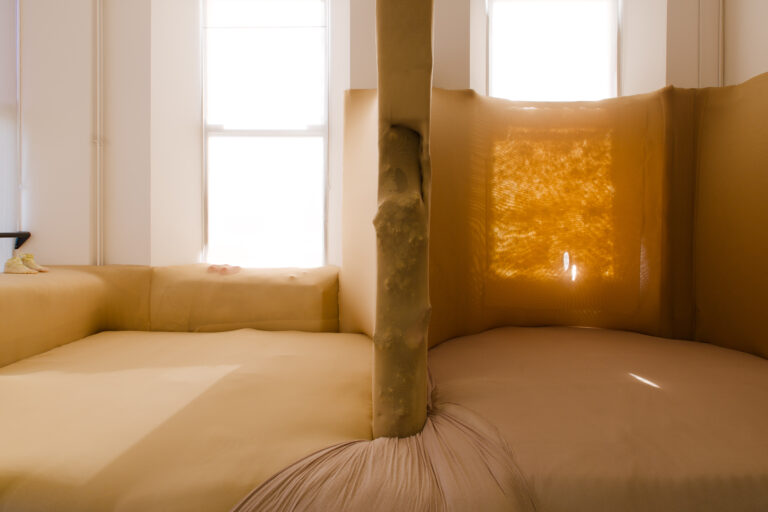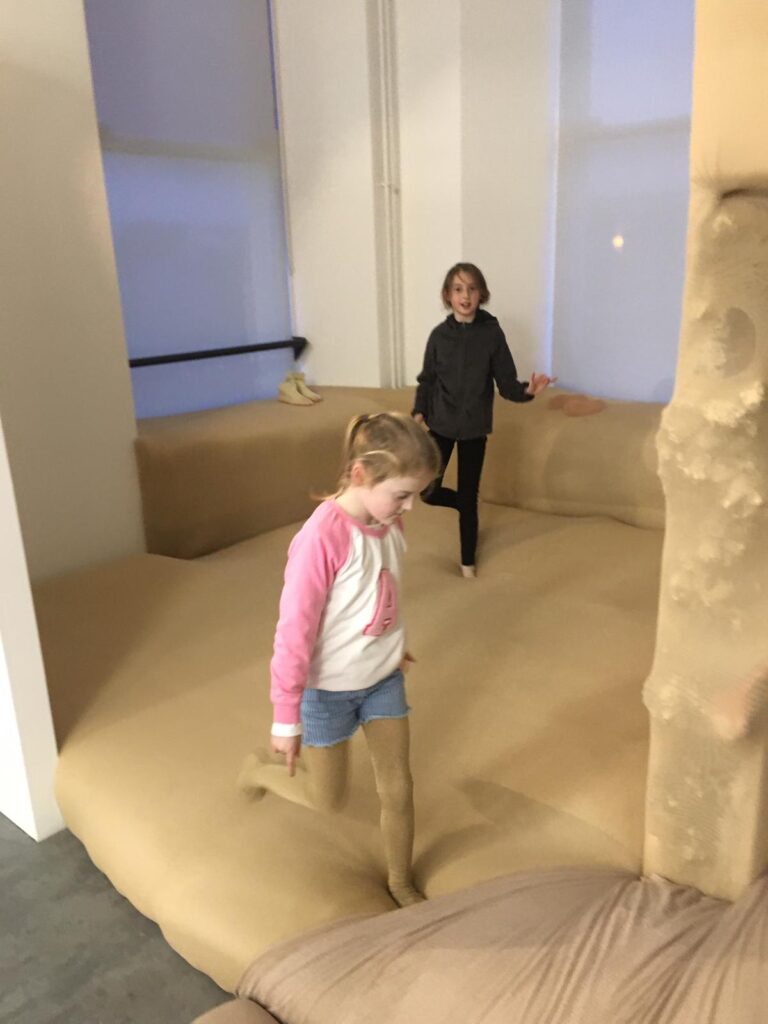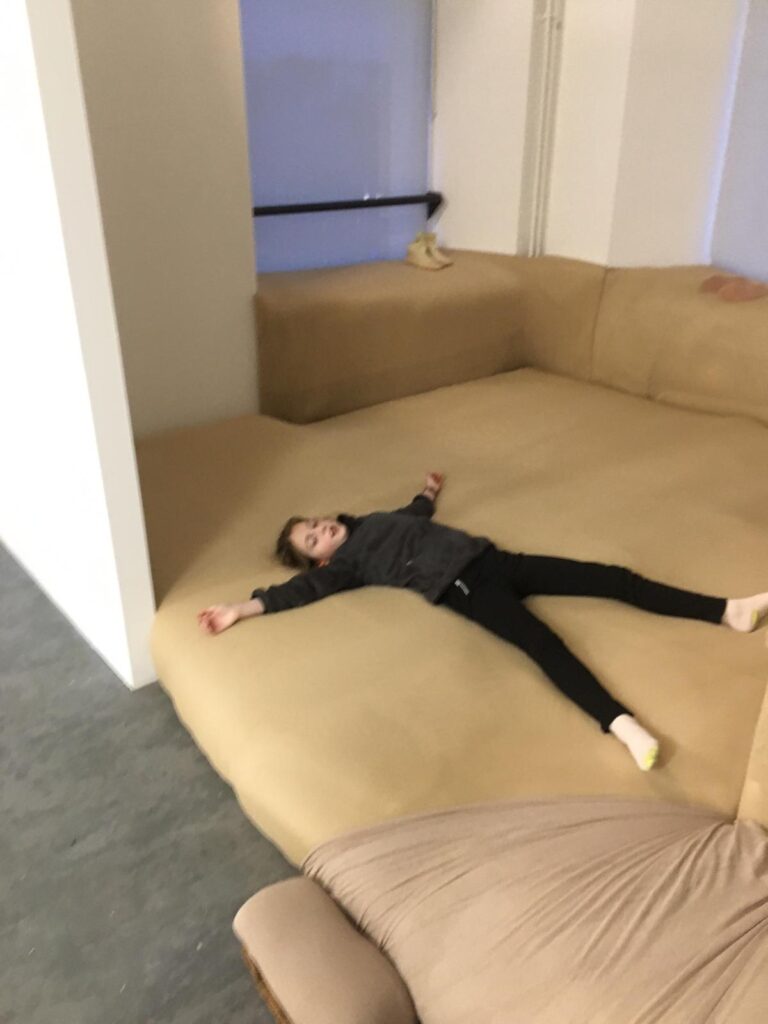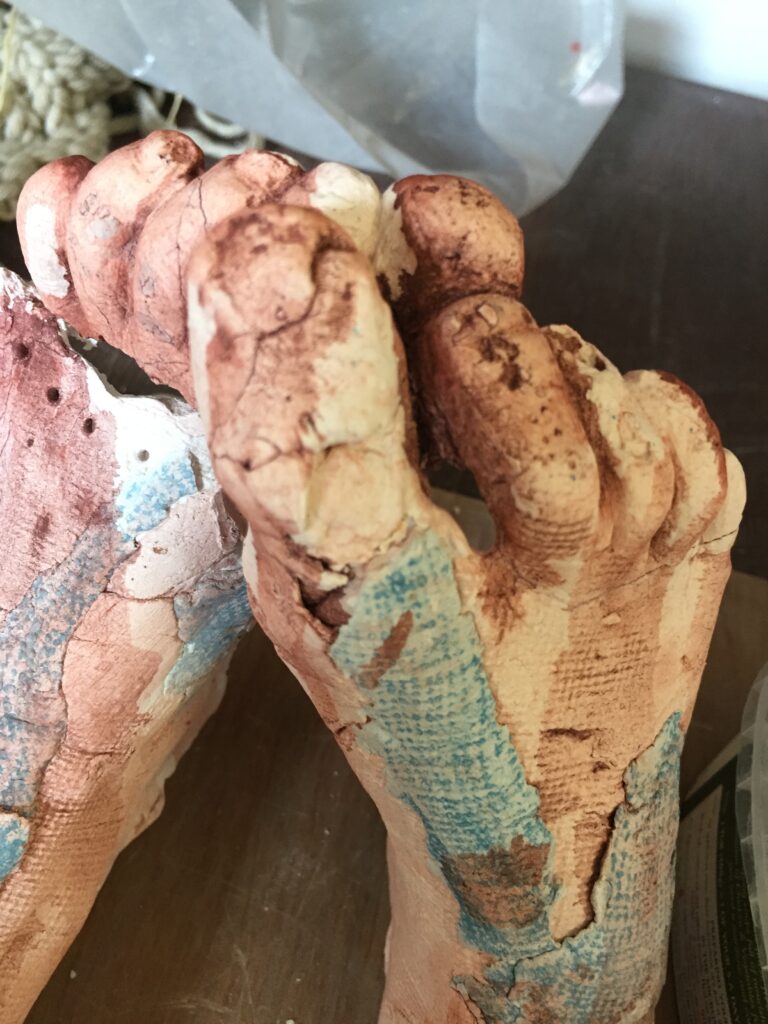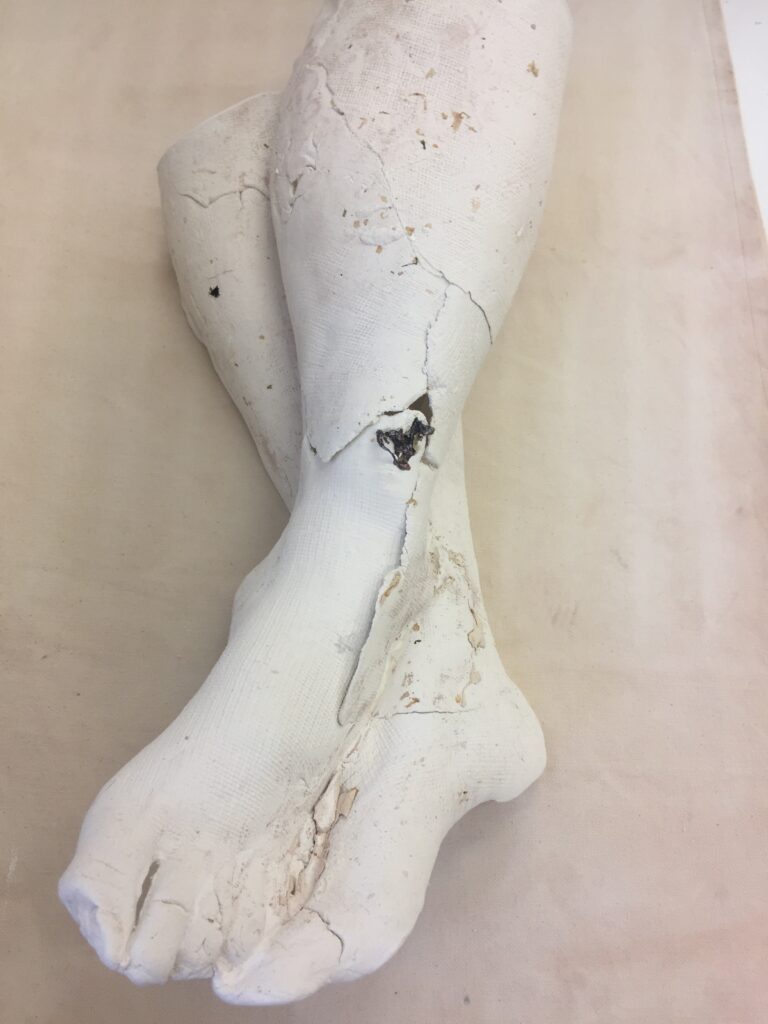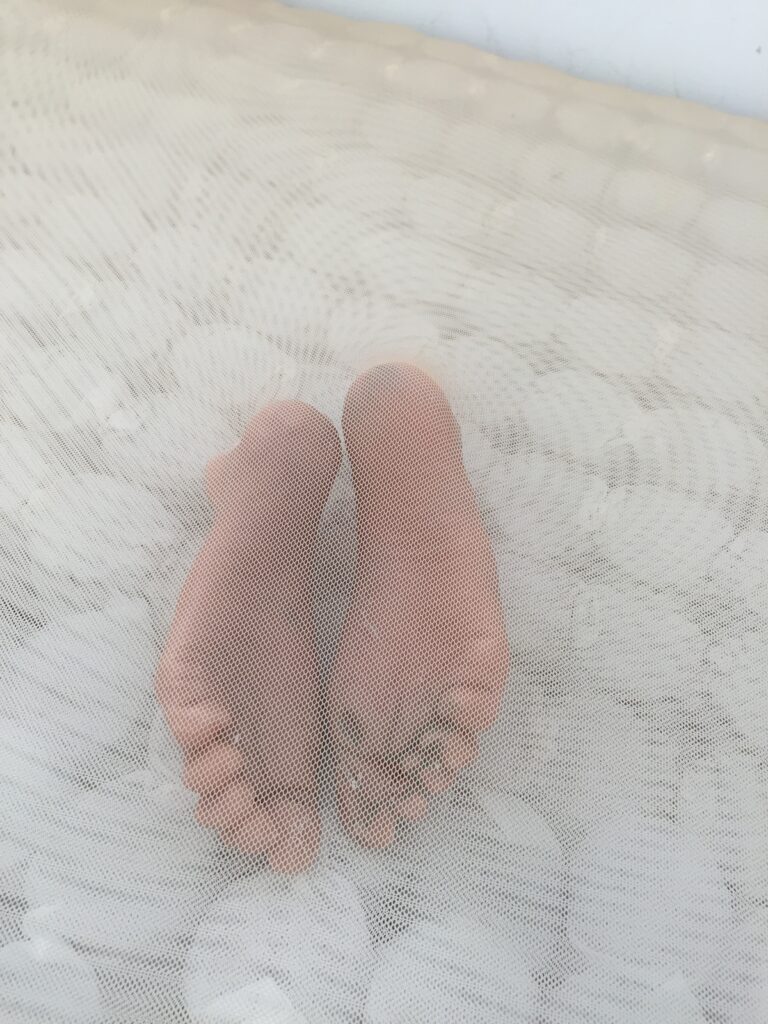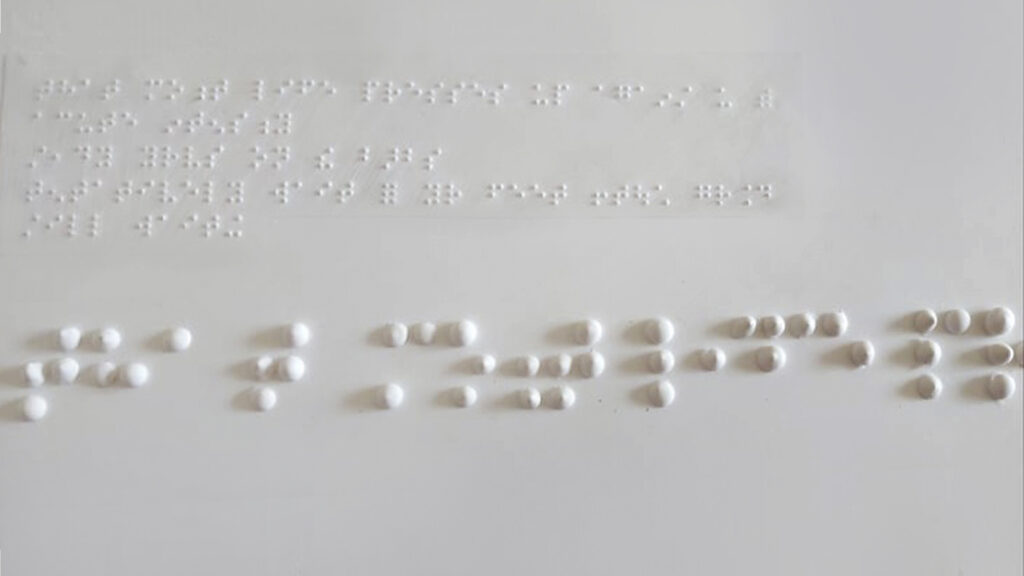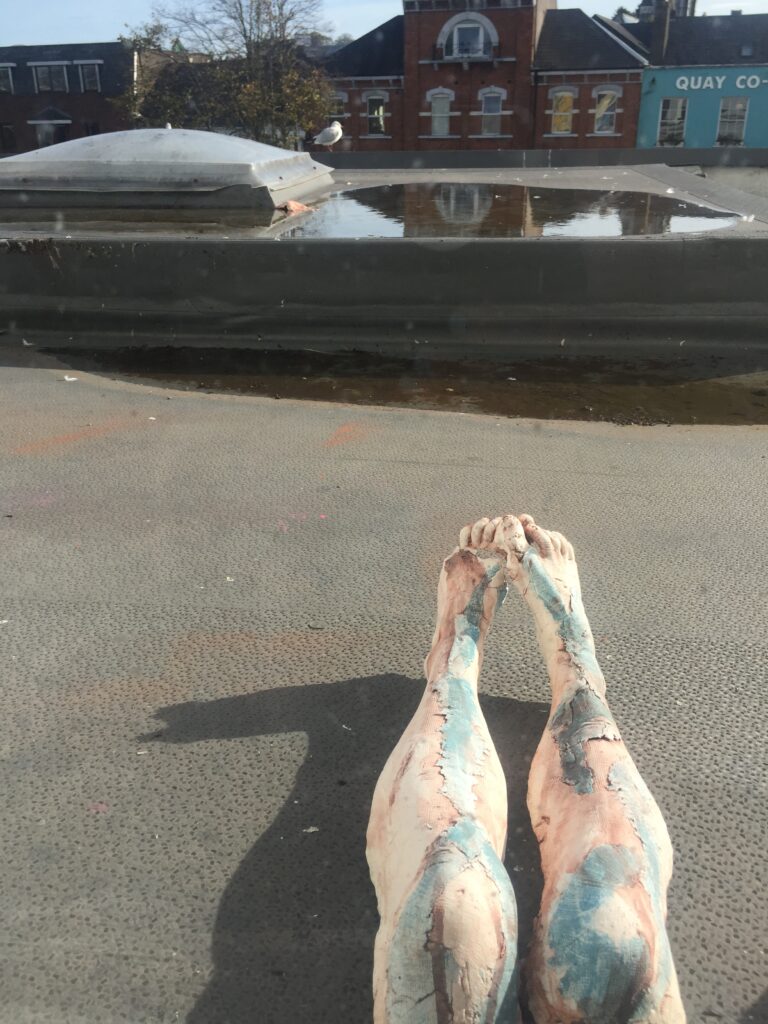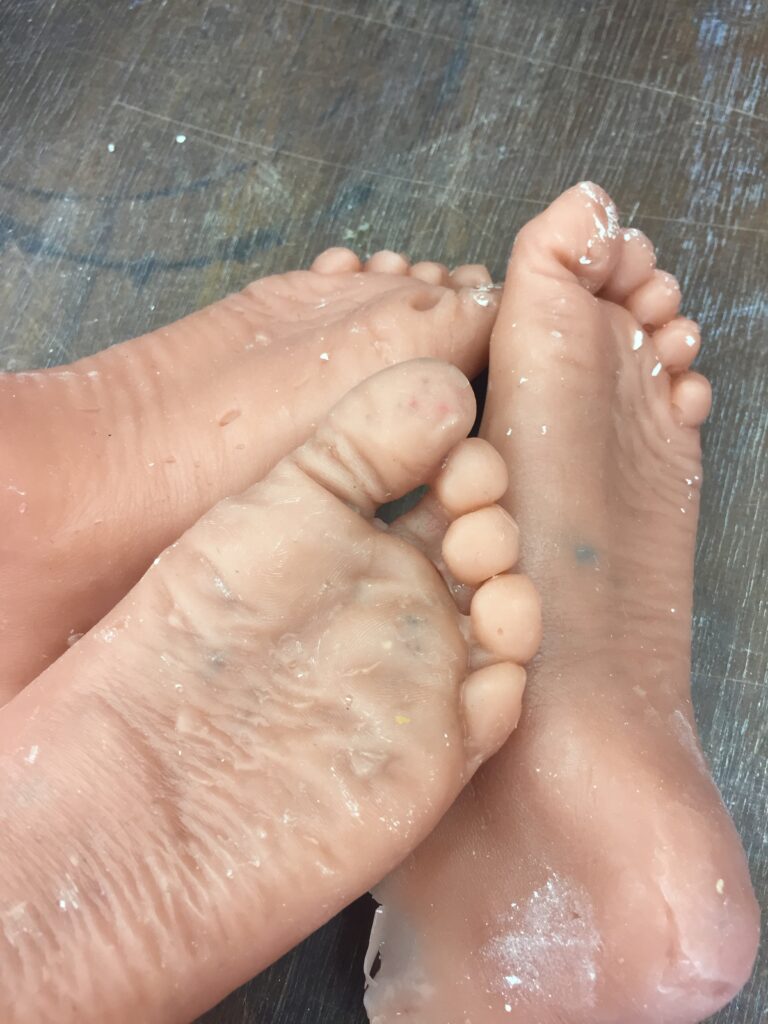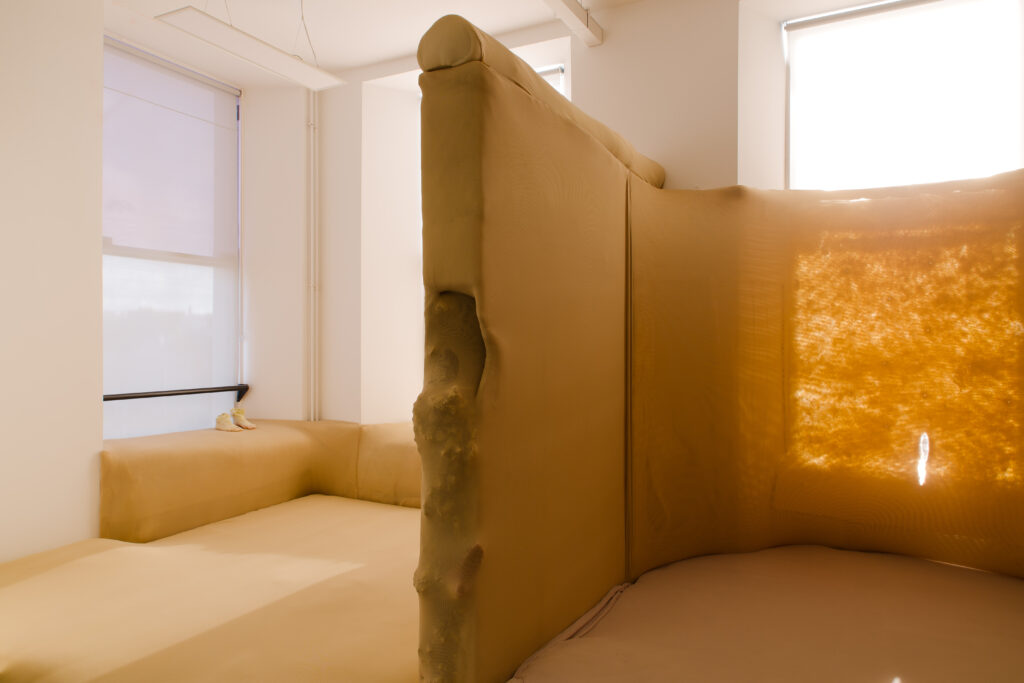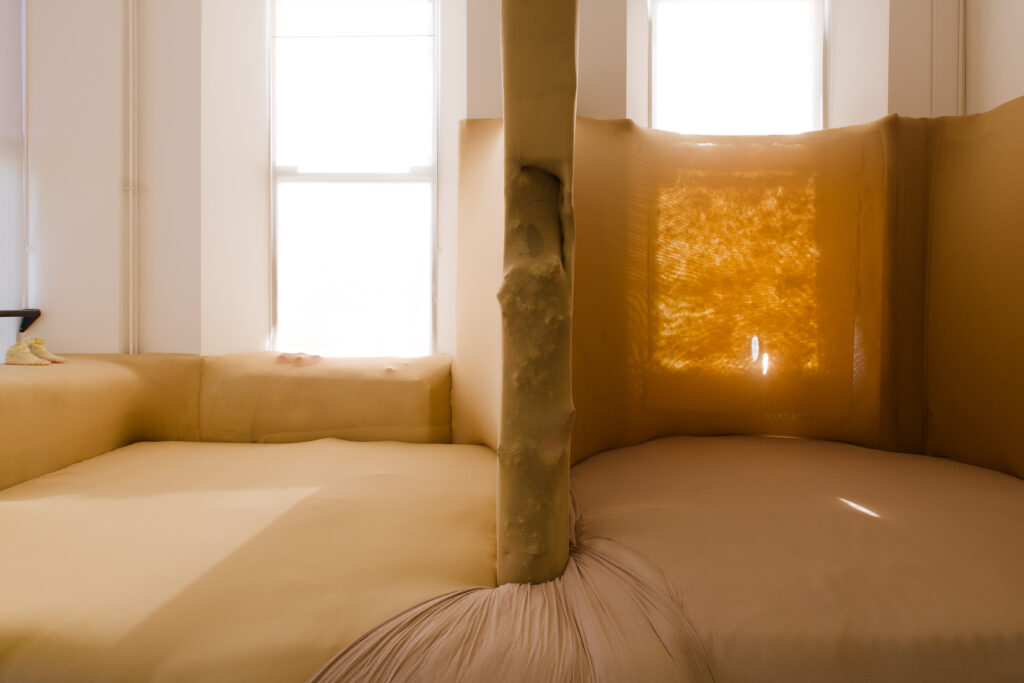An experiential piece spread over 2 studio spaces. 10 metres x 5 metres, with a dividing wall. The area is covered with a fabric reminiscent of the type of tights worn by nuns in the 1970’s/80’s. The floor of the space is safe to walk on but undulates underfoot. The fabric, which also covers the walls, gives an optical illusion effect which makes accurate depth perception difficult. On top of surfaces, inside the dividing wall and outside the space on the rooftop (visible through the slit in the fabric covering the window); unexpected sculptural feet of adults and children are encountered. Text is present in Braille. The braille text is also reproduced in porcelain dots. A blind invigilator is present to read the text if requested to do so. At the entrance of the space there is a prayer hassock.
Throughout the masters I was exploring ‘affect’. That sensation that remains with you after an experience, because it has vibrated at your very core. Affect can be positive or negative but is always felt in the body and is often beyond words. Affect can be involuntarily felt, even years later, if you encounter circumstances similar to those that initially created it.
My research centred around women who were children and teenagers in Ireland in 1970’s and 1980’s. The choice of material was influenced by my time spent in Catholic boarding school.
I wanted to create an immersive space that looked innocuous when encountered. Enticing enough to enter voluntarily, but unsettling when explored. Once inside, the sense of uncertainty and vulnerability are instantaneous as the ground beneath you is unexpectedly soft and moves. If you take a moment it is relatively easy to regain control, which is lost again once your body moves. It becomes necessary to concentrate and consider your every movement. The space can also be traversed in a carefree manner (much like a funfair ride). Ideally the space would be experienced in solitude. It was important to me that the sculptural aspects were subtly lit and once encountered that they be of visual interest but could equally be overlooked. The slit allowing you to view the external sculpture placed on the roof directly outside is only accessed by bending down. The feedback I received is that the material and experience of the space once inside is slightly unnerving and uncomfortable for many.
The presence of self-composed braille text and the blind invigilator was to create more uncertainty and highlight female and societal vulnerability. The understanding of the text is only possible through the assistance of the invigilator. The role reversal proved to be too uncomfortable for most viewers who stopped short of requesting help from the invigilator. (The invigilator had predicted that the general public would not approach her).
Viewers are also presented with porcelain representation of the braille text. This is functionally useless but visually appealing. (Despite verbalising out loud their wish to comprehend the text, 97% of viewers were happy to leave the space, having spent time experiencing it, running their hands over the text and visually appreciating it all, without asking the invigilator for understanding. The, evidently blind, female, middle aged, invigilator was instructed not to volunteer translation but to be open and welcoming to those that requested help).
The title harks back to childhood games. It also reflects religious connotations that are echoed by the presence of the hassock, which in turn can be mistaken as an entrance step but was instantly recognisable by viewers of a certain age and religion.
If viewed lying flat on your back outside the space, Mother May I presents a completely alternative visual.
